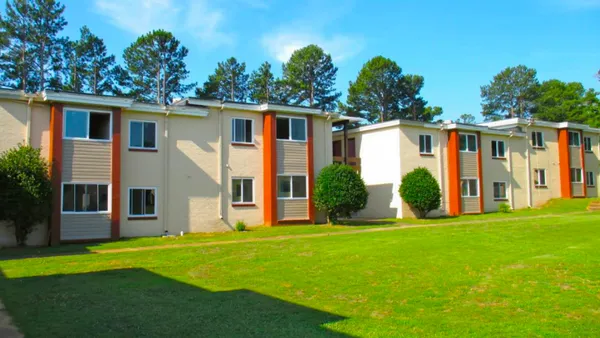The parade of apartment REITs issuing better-than-expected first-quarter results continued in late April when Palo Alto, California-based Essex Property Trust reported that its core funds from operations beat expectations by $0.09.
“The outperformance was primarily driven by higher same-property revenue growth, which accounted for $0.06 of the $0.09 beat,” CFO Barb Pak said on the earnings call.
Buoyed by that strong start, Essex is increasing the midpoint of same-property revenue growth by 55 basis points to 2.25%. Improvements in delinquency account for 40 basis points of the revision and are projected to be 1.1% of scheduled rent for the year. Essentially, the REIT was able to start collecting rents on delinquent units.
However, Essex isn’t raising guidance in other areas.
“While we are trending slightly ahead of our expectations on blended lease growth so far this year, especially on renewals, we have not factored any revision into our guidance as we want to get further into peak leasing season when we sign the bulk of our leases,” Pak said.
Here are three takeaways from Essex’s earnings report and call:
Limited supply boost
Roughly 5% of Essex’s portfolio is exposed to the tech sector. So, the company feels the ripples when that industry struggles, especially in its Northern California markets. Right now, those firms are reallocating resources to artificial intelligence opportunities, CEO Angela Kleiman said on the earnings call.
“With this in mind, we do not anticipate an imminent improvement in job growth in the high-paying sectors, which is typically the key catalyst to accelerate demand for housing and rent growth,” Kleiman said.
However, Essex’s portfolio benefitted from relatively little new competition in Q1, with total housing permits as a percentage of stock continuing to remain well below 1% in its markets.
“What we are seeing is that the supply definitely is a significant benefit for our markets, and it's something that we've been stating for several years now in that we don't need much demand for us to achieve our plan and to have a healthy performing market,” Kleiman said.
The rising cost of ownership in this elevated interest rate environment is also helping Essex, with the median price of owning a home being 2.5 times more expensive than renting in its markets. “Likewise, the percentage of our turnover attributed to purchasing a home has fallen from around 12% historically to 5% today,” Kleiman said.
Delinquencies weigh on rents
In Q1, Essex saw 2.2% growth in blended lease rates. However, delinquencies, despite improvement, still weighed on growth.
“Our new lease rates are tempered by delinquency-related turnover in Los Angeles and Alameda, [California], which comprise approximately 25% of our total same-store portfolio,” Kleiman said. “If we excluded these two regions, new lease rates would have been 150 basis points higher at 1.6%.”
BY THE NUMBERS
| Category | Q1 | YOY Change |
| Revenue | $424.2 million | 3.6% |
| Net operating income | $286.4 million | 3.0% |
| Operating expenses | $123.5 million | %5.0 |
| Funds from operations | $4.60 | 21.1% |
| Average rent | $2,631 | 2.1% |
| Occupancy rate | 96.3% | -40 bps |
SOURCE: Essex
At the end of April, Essex was sitting at 96% occupancy as it entered the busiest leasing season of the year. “Concessions for the portfolio averaged only 3.5 days,” Kleiman said. “And aside from areas with delinquency headwinds discussed earlier, we see opportunities to increase rental rates throughout our portfolio.”
The majority of Essex’s markets are performing better than expected, with one notable exception.
“What we're seeing right now is that Seattle and Northern California are trending slightly ahead of our original market rent forecast. Southern California is generally as planned, but there is an L.A. drag,” Kleiman said.
Without deals, a pivot
With sluggish deal volume, Essex has turned to its joint venture platform to generate growth. In Q1, it purchased a partner's 49.9% interest in a $505 million joint venture portfolio consisting of four properties that is slated to produce almost $2 million of funds from operations accretion in 2024, according to the release.
“We do have significant opportunities to continue to acquire from our joint venture partnerships,” said Essex’s Chief Investment Officer Rylan Burns on the earnings call. “What we are going to do, however, is try to make the best capital allocation decision we can at any given point in time.”
On the acquisition front, there is still an “ample amount of capital” seeking West Coast assets, according to Burns. “There's a bit of a scarcity premium for well-located suburban product that's coming to market,” he said.
When properties do make it to market, competition supports high pricing. “We have very deep bidder pools, both levered and unlevered buyers, and I think some of our public investors would be surprised at where these transaction cap rates are going to come out,” Burns said.
Click here to sign up to receive multifamily and apartment news like this article in your inbox every weekday.





































